
When a hydraulic cylinder starts leaking you may ask yourself if it’s necessary to perform a full repair, or if you could simply replace hydraulic cylinder seals on your own. It’s true that many farms and factories replace their own seals to save time and cut down on costs. This is understandable in today’s competitive environment, with the need to reduce the amount we spend on maintenance. However, sometimes the quickest and cheapest immediate fix does not translate into long term savings. More often than not, hydraulic seal failure is only the symptom of a larger underlying issue. If this is the case, superficial repairs will only mask these symptoms and lead to more costly problems down the road. So, with that in mind, here’s what you should consider before you simply reseal that leaky hydraulic cylinder.
False economy: the myth that replacing hydraulic seals is cheaper than a full repair.
 Hydraulic seals always fail for a reason - and it’s not always the fault of the seal itself. Many times, the problem lies elsewhere in the system and the seal - being the weakest link in the chain - is merely the first sign of trouble. If you replace the seal without resolving the condition that caused it to fail, it is virtually guaranteed to fail again in short order. Not only that, but the more often you replace the seal, the worse the condition becomes, which means the frequency of repair continues to increase. This means the cylinder will be down for maintenance more often, which leads to productivity issues and ever-increasing maintenance costs.
Hydraulic seals always fail for a reason - and it’s not always the fault of the seal itself. Many times, the problem lies elsewhere in the system and the seal - being the weakest link in the chain - is merely the first sign of trouble. If you replace the seal without resolving the condition that caused it to fail, it is virtually guaranteed to fail again in short order. Not only that, but the more often you replace the seal, the worse the condition becomes, which means the frequency of repair continues to increase. This means the cylinder will be down for maintenance more often, which leads to productivity issues and ever-increasing maintenance costs.
It’s a snowballing situation that is not going to go away and will end up costing more in lost productivity than the cost of an effective repair. This is a kind of false economy, which becomes exponentially more costly the larger the operation. A small farm might be able to get away with resealing the odd cylinder now and then, but a large factory with dozens of cylinders will quickly find this lack of maintenance transferred to their balance sheet in one form or another.
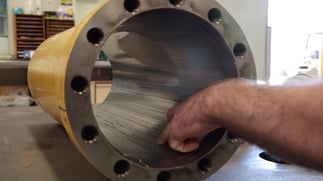
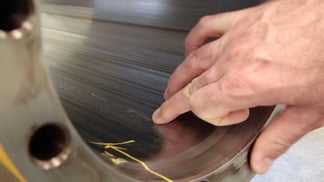
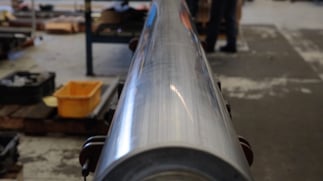
Don’t fix the seal - fix the failure.
If minimizing maintenance costs is your goal, then the most effective way to accomplish it is to diagnose the underlying cause of the hydraulic cylinder failure and fix the problem. Hydraulic cylinders fail for several reasons, which we have written about in previous articles, but to make things easy, here are the main points of failure you need to know about.
- Scored cylinder rods
- Bent piston rods
- Ballooned cylinder barrels
- Fluid degradation
- Improper hydraulic fluid
- Overheating and or heat exposure
- Worn components such as piston and bearing surfaces
Any of these problems can cause a healthy hydraulic seal to begin leaking again or lead to the premature wear and failure of a relatively new hydraulic seal.
And if there are multiple failures you could fix one problem and still find your cylinder going down again within days. Take the example of a cylinder rod that is both bent and scored? You could re-chrome it and fix the surface finish and still have a hydraulic seal that fails due to uneven loading. Thus, replacing the faulty seal without addressing the underlying cause could simply result in another repair.
Save time and money with a long term repair.
The only way to ensure you address these underlying issues is to perform complete disassembly, inspection and diagnosis of the condition of the cylinder. You may do this if you have the equipment and the experience to perform this task yourself. Most often, however, it is preferable to allow a trained and experienced hydraulic repair technician to perform this task. While some issues may be fairly obvious, other conditions are less apparent and it requires a practiced eye and many years of experience to assess cylinder condition.
The correct repair procedure should include:
- Careful disassembly with specialised stripping benches and equipment to avoid damage
- Meticulous measuring of all components to ensure they are within specified tolerances
- Restoring the hard chrome plated surfaces if necessary
- Replacing all internal and external seals
- Replacing worn components, such as pistons, bearings, and joints
- Honing barrel tubes or machining new barrels from scratch if necessary
- Restoring worn mounts (including reclaiming materials using surface engineering if necessary)
- Precision reassembly using purpose-built reassembly benches to ensure correct torque settings and avoid damage to new components due to improper assembly
- Performing rigorous testing on calibrated hydraulic testers
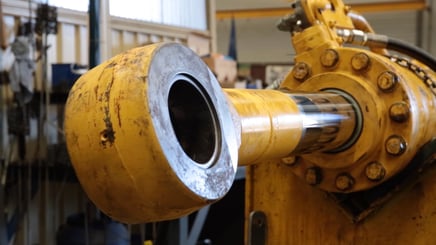
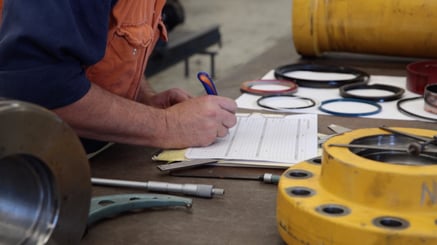
So there you have it. Before you replace hydraulic seals yourself, you should always take care to fully understand the root cause (or causes) of every hydraulic cylinder seal failure and address all those issues. If you have experience and the necessary tools to disassemble, inspect, recondition and test all parts of the system, then you are capable of performing a long term repair. For most, it saves more time and money to use a reputable hydraulic cylinder repair company to provide added peace of mind.
Berendsen’s technicians return hundreds of hydraulic cylinders to peak performance every month and are always willing to put their experience to work to get you back in action fast. Contact them if you have any questions, or if you want to know even more about the subject, you can download our complete guide to hydraulic cylinder repairs.



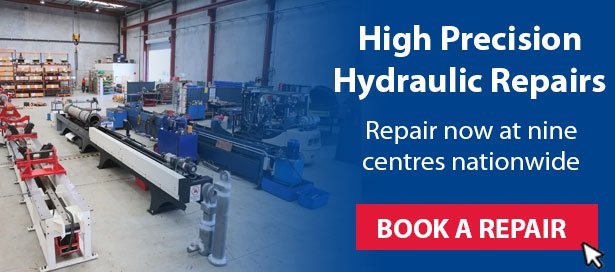




Leave A Comment